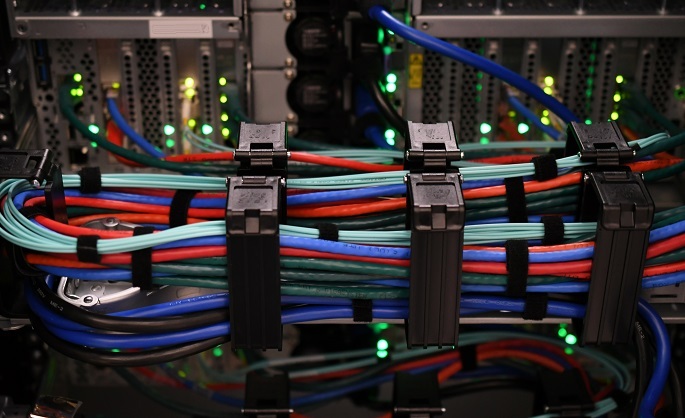
 Data Structure
Data Structure Networking
Networking RDBMS
RDBMS Operating System
Operating System Java
Java MS Excel
MS Excel iOS
iOS HTML
HTML CSS
CSS Android
Android Python
Python C Programming
C Programming C++
C++ C#
C# MongoDB
MongoDB MySQL
MySQL Javascript
Javascript PHP
PHPPhysics
Chemistry
Biology
Mathematics
English
Economics
Psychology
Social Studies
Fashion Studies
Legal Studies
- Selected Reading
- UPSC IAS Exams Notes
- Developer's Best Practices
- Questions and Answers
- Effective Resume Writing
- HR Interview Questions
- Computer Glossary
- Who is Who
What is the full form of DCD?
Introduction
Downstream Channel Descriptor (DCD) is a word used in the telecommunications and networking industries. DCD is a crucial factor in a cable modem network that influences the properties of the downstream channels.

The Downstream Channel Descriptor gives details about the downstream channel's maximum and lowest frequencies, as well as the modulation scheme, symbol rate, and other crucial factors. The cable modem termination system (CMTS) transmits the DCD, which the cable modems receive and use to configure the downstream channel.
Overview of Downstream Channel Descriptor (DCD)
An essential element of cable modems that enables high-speed internet connections is the downstream channel descriptor (DCD). It is a message that the cable network sends to the modem informing it of the current network state, including the number of channels accessible, the modulation method being used, and other elements required for establishing a secure connection.
DCD aids the modem in selecting the proper downstream channels and gathering the data necessary to grant the user access to the internet. To guarantee that the modem gets the most recent information on the network status, which might vary owing to a variety of circumstances such as changes in the cable infrastructure, network congestion, or maintenance operations, the DCD message is frequently broadcast.
The cable modem cannot connect to the network without the DCD message, which prevents the user from connecting to the internet. In order to provide a steady and trustworthy internet connection, it is crucial to make sure that the DCD message is delivered correctly and received by the modem.
Components of Downstream Channel Descriptor (DCD)
A crucial part of the DOCSIS (Data Over Cable Service Interface Specification) system utilized by cable modems is the Downstream Channel Descriptor (DCD).

The downstream channel, which is the channel that sends data from the cable provider to the modem, needs to know important information, which the DCD gives to cable modems. Several of the DCD's essential elements are listed below −
Frequency Spectrum
The downstream channel's frequency range, which is normally between 88 MHz and 1 GHz, is specified by the DCD.
Molecular Profile
The maximum data rate that may be obtained is determined by the modulation profile used on the downstream channel, which is information that the DCD supplies.
Power Source
In order to make sure that the signal is strong enough for the cable modem to receive the data, it is crucial to know the power level of the downstream channel as shown by the DCD.
Channel ID
The cable modem uses the downstream channel's specific ID, which the DCD gives it in order to identify it from other channels.
Name Rate
The DCD determines the downstream channel's symbol rate or the number of symbols transferred per second.
Importance of Downstream Channel Descriptor (DCD) in cable modems
Cable modems must have the Downstream Channel Descriptor (DCD) in order to function. It is essential for giving consumers dependable and quick internet access. The following are some of the factors that make DCD so crucial in cable modems −
Efficient use of available bandwidth
DCD allows cable modems to efficiently utilize the available downstream bandwidth by providing information about the channel characteristics, such as the modulation scheme, symbol rate, and channel frequency range. This information helps the modem to optimize the use of the available bandwidth, which results in faster internet speeds.
Facilitates communication with the headend
The downstream channel's parameters, such as its maximum and lowest frequencies and its modulation scheme, are disclosed to the cable modem by the DCD. By properly communicating with the headend using this information, the modem is able to efficiently receive downstream signals and transmit upstream signals.
Enables synchronization
The DCD provides synchronization information that helps the modem synchronize with the downstream channel. This synchronization ensures that the modem receives the signals correctly and reduces the chances of data loss or corruption.
Ensures compatibility
The modem can synchronize with the downstream channel with the use of synchronization information from the DCD. This synchronization minimizes the possibility of data loss or corruption and guarantees that the modem receives the signals correctly.
Helps diagnose problems
In order to identify connectivity problems with the cable modem, the DCD information is crucial. Network engineers might find faults with the downstream channel and take remedial action to fix them by analyzing the DCD data.
Upstream Channel Descriptor (UCD) vs Downstream Channel Descriptor (DCD)
Cable modems transport data between the user and the internet service provider (ISP) using both upstream and downstream channels. Two elements that aid in regulating and optimizing the data flow are the Upstream Channel Descriptor (UCD) and the Downstream Channel Descriptor (DCD).
Here are some key differences between UCD and DCD −
Function
While DCD provides data on the downstream channels, UCD contains data on the upstream channels.
Information Included
While DCD contains information on downstream channel width, frequency range, and modulation profiles, UCD contains information on channel frequency, type of modulation, and power level.
Timing
Due to the lower likelihood of major changes in the upstream channels, UCD updates happen less frequently than DCD updates.
Impact on Performance
Although both the UCD and DCD are necessary for proper cable modem functioning, problems with the DCD can result in more obvious interruptions in internet access.
Conclusion
An essential part of cable modems, the Downstream Channel Descriptor (DCD) promotes effective communication between the modem and the cable provider's network. The DCD helps the modem choose which channels to use and how to make the most of them by supplying details about the available downstream channels. As a consequence, consumers experience improved network efficiency, quicker download speeds, and a more dependable internet connection.
FAQs
Q1. What occurs if a cable modem cannot obtain data from the DCD?
A. A cable modem may be unable to efficiently interface with the cable network if it is unable to receive data from the DCD, which might lead to decreased speeds or lost connections.
Q2. Can the cable network operator remotely modify the DCD?
A. In order to improve network performance, the cable network operator can update the DCD remotely to add or delete downstream channels and alter the modulation type or signal strength, among other changes.
Q3. In cable modems, what does the Downstream Channel Descriptor (DCD) serve?
A. Cable modems require vital information from the DCD on the downstream channels they may use to connect to the cable network.

